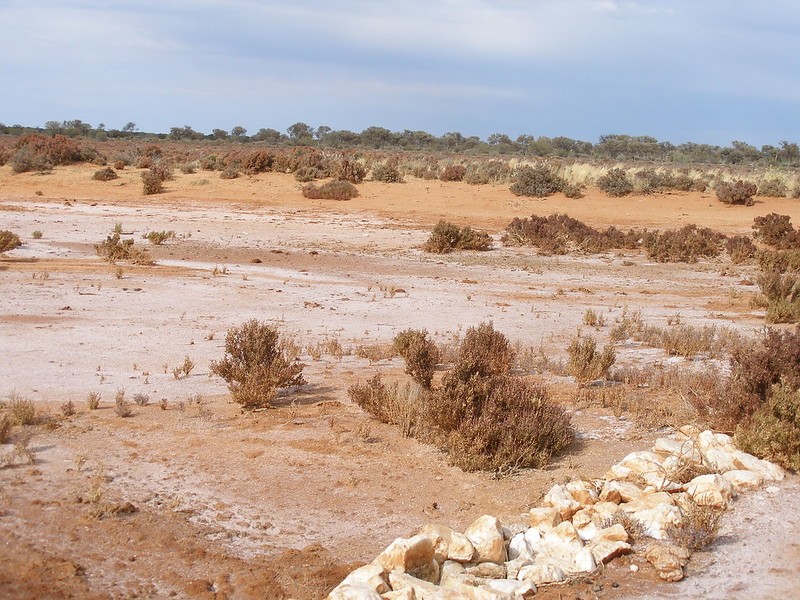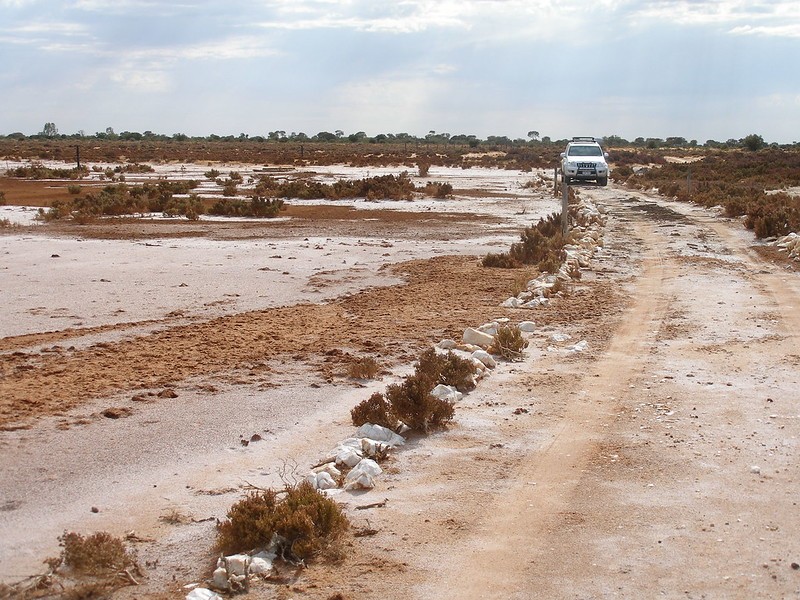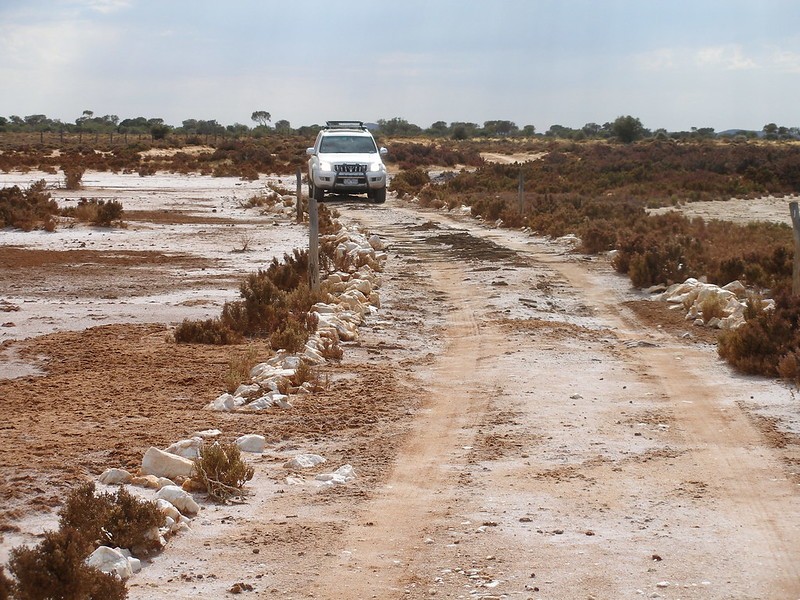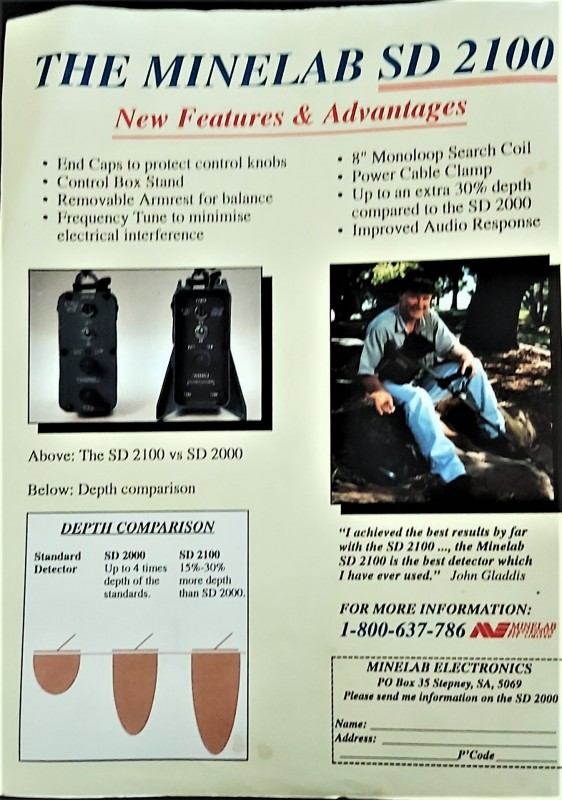-
Posts
1,950 -
Joined
-
Last visited
Content Type
Forums
Detector Prospector Home
Detector Database
Downloads
Everything posted by geof_junk
-
I noticed that there is 6 rows of stitches on the cap, does each row have 1000 stitches eg 6000 🤣
-
Most of the people that know have paid for their detectors, but for a lot of them the hourly rate for getting them would be below minimum wages (but two fold advantage is the fun of finding it and not paying tax on it😀)
-
The facts involved are many, but can be reproduced with the selection and conditions. It like the wife asking you do you like a new dress. If the price is right and the style OK you say yes, but if you hate it ( too dear, sh!thouse style , etc ) what do you say. The colour clashes with your hair or something. However if she does not like it features but it's cheaper than another she likes it pays to say it no good get the other one. (That way we stay in the good books and not get blamed for the bad choice). The advertiser know this behaviour and presents the good points that you want to here. Take the link Steve gave for ML GPZ 14 & 19 inch coils. quote"For comparing actual physical coil sizes, by overlaying the 19" onto the 14" (using an ellipse of best fit at the outer edge of the Tx and Rx windings), the plan view area of the 14” is 80,371 sq mm, and for the 19” is 157,542 sq mm, so 96% larger. This means it nearly twice the size in area. The uniformed will think that they will do twice the amount of ground area cover. But by their own figures they only get 53% and they include 2½ inches on each end of a swing the % area will also depend on the length of the swing. (That is if you use the swing length as centre of the coil) The width of the forward motion of 14" is only 73% of the 19" or 27% more forward coverage (but you will get more overhang field at reduced strength) Quote "Minelab Note (23/11/2016): Further to the information from Phil above, the 53% additional area/coverage of the GPZ 19 coil over the GPZ 14 has been calculated by SolidWorks CAD from the combined area of the respective receive coil windings. This is shown in the diagram below:" So as you can see figures are figures it is the way it used that matter. But real life feed back, from people who have the experience and knowledge far exceed the information in any advertising articles.
-

Back To Digging Everything..
geof_junk replied to Erik Oostra's topic in Metal Detecting For Jewelry
Eric you should point out that the smaller gold colour coin is a $2 and the larger ones are a $1 coin. At least NZ have got the size right. I have found that there is a lot more $2 coins that $1 at most of the beaches that I have done. Back in the 1980s when detecting was new it was a contest to see who got to $100 first the wife or me. -
I found the best outfit for me was a light weight Khaki electrician full cover overalls (no metal). I always got a size larger and cut the legs down a bit. This gave me plenty of room for air movement. As for the head I used a hat with a cap and a long tail to cover my neck. So you can't call me a RED NECK.😁
-
Lets hope you all get a good supply at once, not drips and drabs where the early birds get an unfair advantage while the rest are still waiting for one.
-

Making The Move From GPZ 7000 To GPX 6000
geof_junk replied to Gerry in Idaho's topic in Detector Prospector Forum
That some it up, only a small % of my ounces plus were whispers. I only uses the big guns (coils) when the ground get too deep for the smaller nuggets. I am sure when the GPX6000 sales are exhausted we will get a GPZ8000 Geosence Plus with all the bells.😁 -

GPX 6000 - Tips, Tricks, Technical Questions
geof_junk replied to Northeast's topic in Detector Prospector Forum
It really good to just show what you got when you are leaving, but make sure no one went past your locations when you were there. Then you say you were 🦨 -

My Abbreviated Session With The 6000
geof_junk replied to Condor's topic in Detector Prospector Forum
Thanks for that mate, as I'm 6 years closer this month to expiry date than you and it good to see the weight advantage for us older guys that you posted. -
-

GPX 6000 - Tips, Tricks, Technical Questions
geof_junk replied to Northeast's topic in Detector Prospector Forum
Always check what you think as junk, because it may not be the the case. I have mentioned in another post that a bit of rust looking target turned out to be a 2 oz nugget. Thanks Northeast for your reply. Let hope other prospectors post their experiences to save the rest of us in deciding what to do. -
I refer to the majority. Most of mine were quite ,distinct from ground or loud junk signal. Does that mean if I was going slow I would be better to sped up a bit. I know beginner go too fast but speeding up a bit would be more productive for those that have gain experience, I know what works for me or am I wrong. Let hear your view.
-

GPX 6000 - Tips, Tricks, Technical Questions
geof_junk replied to Northeast's topic in Detector Prospector Forum
What depth do you think you would of got those nuggets with a gpx5000, gp3000 or a QED and what is the percentage gain do you think you got with the new GPX6000. From your estimates I would calculate the extra gold that can be obtained from a well done grid. I know it is hard but a ball park value would be appreciated. Great post by the way NorthEast. 👍 -
The gold rush with detectors started in 1979 in Victoria when a team ( I can only remember Bob Shephard ) hit Wedderburn Vic. Aust. They found at least a shoe box each of large nuggets. The rush was on. There were that many speakers going beep, even the Aust. lyerbird ( .......Lyrebird sounds.....) were going off everwhere. That when a set of earphone was the only way of not being distracted from the racket. For sure Earphones gives the best information from your detector. (but then again I have not seen graphical representing of a signal on gold.)
-
A simple way for those are untrained look at geological maps and google visual location features. Look at the areas of your GPS reading of your nuggets and the area around those locations. This will indicate the ground and geo condition that have been good to you. Similar geo and visual spots will be exceptional the best spots for your experience and knowledge to be successful . This method is a good guide for those that have not had 5 year of schooling to read the geo features of the area you are in. Take note of the geo condition/type of the ground near and out side your nugget spread. Come on the rest of you give us some of your experience it may not be correct but it will give the rest of us an idea that may be useful to extend our thought of extending our knowledge that will increase our gold yield.
-
As Jasong has pointed out Google Earth and Geo Maps can cut down the time spent on useless ground. The point to consider is how much time to spend testing the location. In virgin ground I see a few spots that has had someone walking through it with a chain. The amount of time the spent there was less than five minutes before they left the spot. I spent over 50 hours gridding there and got 400 plus small nuggets about four ounces and plus a couple of good bits over an ounce. Before covid hit I started a post (which I should continue another time) on nugget spread .....LINK...... I took some Google earth shots of the patches and included a scale to show how far and varied the nuggets were from one and another. Some patches were large some small but considering the time spent to cover 5% of the spread and you can still miss the first. By the way GB_Amteur Gold has always been a hobby of mine and the gold I have sold were used for continuing the hobby. Don't worry I only got rid of the ugly specimens😁 and fly sh!t😁 but I'm sure I have had more skunk days than others but have exceeded 1 oz, 10 oz , 100 oz targets that I set my self, but the next seems out of reach.🙂 If you can limit your search by selecting good ground the odds will be in your favour, an a good sampling method will add to you success, but to stay sane you have to go to fossicking area for a break. By the way GB_Amateur it great to see the input others have contributed to your post.
-
Quote:--- One thing for sure about all this, it’s easy to overthink it! definitely rely on local conditions and your knowledge of where gold typically is to help in the search, but some knowledge and understanding about sampling with transects and grids may help as well! That will reduce the time to pick up a target, if there is any in you selected area and remember that shallow ground are the best and easiest to find a nugget your target area, but some times gold is not where you think it is and the straight line random lines will pick up an unexpected target. Remember you are only looking for the first nugget at the start of patch finding search.
-
Here in Victoria while chasing coins back in 1980 one of my boys found an expensive Automatic shot gun. No one claimed it, but neither my son (10 years old) or myself were able to obtain it. We did not want it anyway but wondered who or what happened to it, but did not believed it was destroyed.
-
To answer your question, it all depends on were, and type of signal and it's rate. I hunt virgin ground so rubbish signals are rare, however they indicate human activity. The speed slows down and I evaluate the site and try and hit a nugget. Some times I hit a nugget and the only initial indication was shallow looking ground. Once the gold nugget is caught, I have to call the wife over and keep my distance looking for the extent of the patch. Then I grid and grid the whole area with shorter straight strokes and moving the coil 75% forward at each end of the swing. I have been told that my slow swing is a bit fast but it works for me. A method of gridding is with the lightest chain I can to leave as little evidence as I can that it has been chained. I always keep the grid line on my right and go clockwise around any tree or obstacle to get the coil as close as possible. This works for right handed detecting. Some of my patches have exceeded 1 mile by ½ mile and has taken many weeks to cover all of it. I must point out that I have many day find no gold in new location even those the general area is geological correct and not random selected non gold indication ground.
-
mn90403 the first 20 odd years on detecting nuggets I did not keep a gps reading of all my nuggets but the last 20 odd years I did. Boy would I like to have use of the LIDAR to go overs some of my patches and a look at similar ground in their vicinity.
-
-
What I'm wasting my time fiddling with the controls. as ML knows more that I can get out of it.😀





